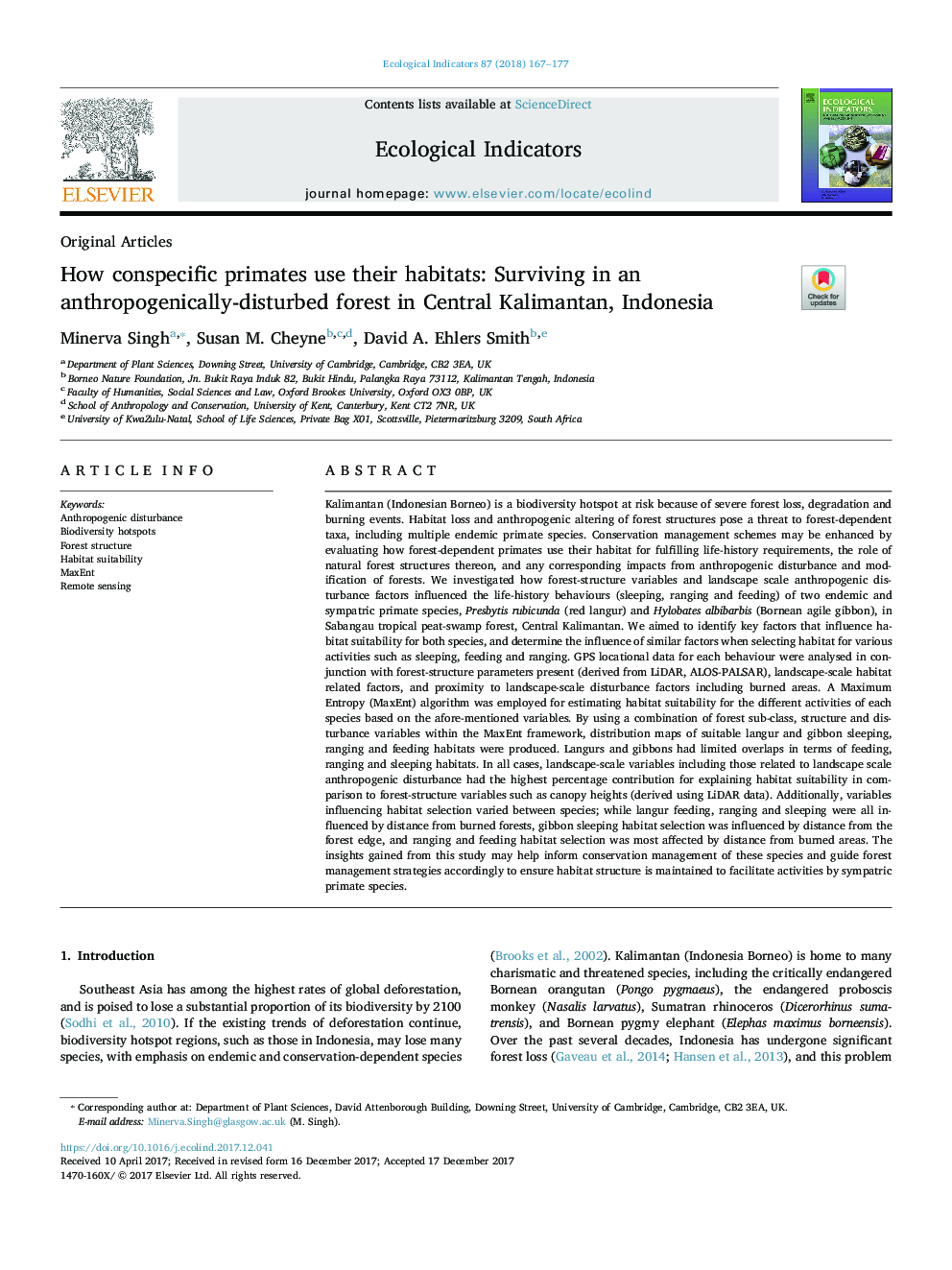| کد مقاله | کد نشریه | سال انتشار | مقاله انگلیسی | نسخه تمام متن |
|---|---|---|---|---|
| 8845584 | 1617115 | 2018 | 11 صفحه PDF | دانلود رایگان |
عنوان انگلیسی مقاله ISI
How conspecific primates use their habitats: Surviving in an anthropogenically-disturbed forest in Central Kalimantan, Indonesia
ترجمه فارسی عنوان
چگونه پرتقالهای متخاصم از زیستگاه هایشان استفاده می کنند: از بین رفتن در جنگل های مصنوعی در کلمنتان مرکزی، اندونزی
دانلود مقاله + سفارش ترجمه
دانلود مقاله ISI انگلیسی
رایگان برای ایرانیان
کلمات کلیدی
موضوعات مرتبط
علوم زیستی و بیوفناوری
علوم کشاورزی و بیولوژیک
بوم شناسی، تکامل، رفتار و سامانه شناسی
چکیده انگلیسی
Kalimantan (Indonesian Borneo) is a biodiversity hotspot at risk because of severe forest loss, degradation and burning events. Habitat loss and anthropogenic altering of forest structures pose a threat to forest-dependent taxa, including multiple endemic primate species. Conservation management schemes may be enhanced by evaluating how forest-dependent primates use their habitat for fulfilling life-history requirements, the role of natural forest structures thereon, and any corresponding impacts from anthropogenic disturbance and modification of forests. We investigated how forest-structure variables and landscape scale anthropogenic disturbance factors influenced the life-history behaviours (sleeping, ranging and feeding) of two endemic and sympatric primate species, Presbytis rubicunda (red langur) and Hylobates albibarbis (Bornean agile gibbon), in Sabangau tropical peat-swamp forest, Central Kalimantan. We aimed to identify key factors that influence habitat suitability for both species, and determine the influence of similar factors when selecting habitat for various activities such as sleeping, feeding and ranging. GPS locational data for each behaviour were analysed in conjunction with forest-structure parameters present (derived from LiDAR, ALOS-PALSAR), landscape-scale habitat related factors, and proximity to landscape-scale disturbance factors including burned areas. A Maximum Entropy (MaxEnt) algorithm was employed for estimating habitat suitability for the different activities of each species based on the afore-mentioned variables. By using a combination of forest sub-class, structure and disturbance variables within the MaxEnt framework, distribution maps of suitable langur and gibbon sleeping, ranging and feeding habitats were produced. Langurs and gibbons had limited overlaps in terms of feeding, ranging and sleeping habitats. In all cases, landscape-scale variables including those related to landscape scale anthropogenic disturbance had the highest percentage contribution for explaining habitat suitability in comparison to forest-structure variables such as canopy heights (derived using LiDAR data). Additionally, variables influencing habitat selection varied between species; while langur feeding, ranging and sleeping were all influenced by distance from burned forests, gibbon sleeping habitat selection was influenced by distance from the forest edge, and ranging and feeding habitat selection was most affected by distance from burned areas. The insights gained from this study may help inform conservation management of these species and guide forest management strategies accordingly to ensure habitat structure is maintained to facilitate activities by sympatric primate species.
ناشر
Database: Elsevier - ScienceDirect (ساینس دایرکت)
Journal: Ecological Indicators - Volume 87, April 2018, Pages 167-177
Journal: Ecological Indicators - Volume 87, April 2018, Pages 167-177
نویسندگان
Minerva Singh, Susan M. Cheyne, David A. Ehlers Smith,
